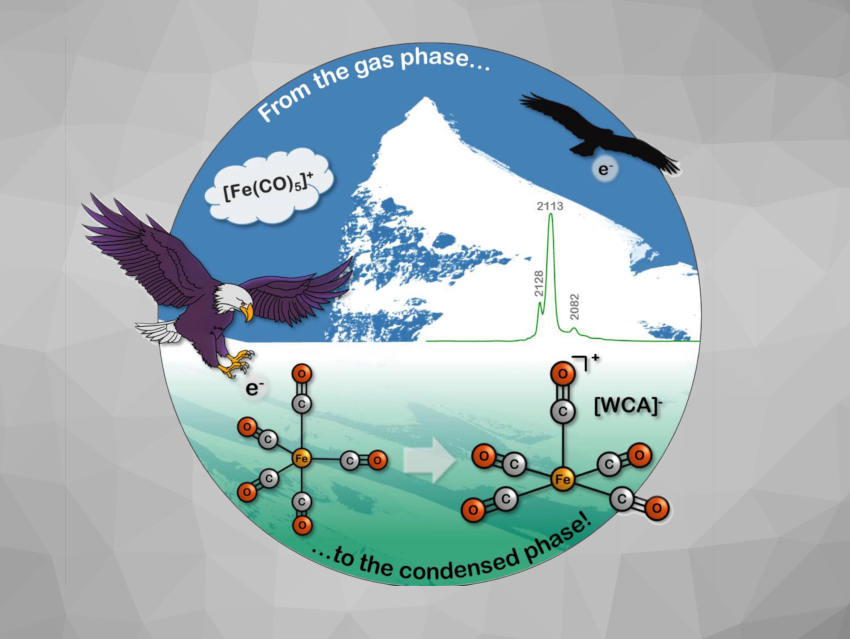In this issue, S. Jiao et al. review ultra-high-temperature molten oxide electrochemistry. What are the physicochemical properties of molten oxides, how are inert anodes and liquid metal cathodes developed for applications? The Minireviews deal with spatiotemporally selective molecular imaging via upconversion luminescence-controlled DNA-based biosensors (L. Li) and microplastics and their additives indoors (T. Salthammer).
In the original research section, I. Krossing et al. describe the synthesis and properties of stable iron pentacarbonyl salts (see picture). O. O. Sokolova and J. F. Bower employed an endo-directing-group strategy to unlock enantioselective (3+1+2) carbonylative cycloadditions of aminocyclopropanes. J. Zhang and Z. Xie succeeded in the N-ligand-enabled aromatic nucleophilic amination of 1,2-diaryl-o-carboranes with (R2N)2Mg for the selective synthesis of 4-R2N-o-carboranes and 2-R2N-m-carboranes. A. Nag et al. synthesized Cs2NaInCl6 co-doped with Sb3+ and Er3+ for the emission of blue and short-wave infrared light.
- Angewandte Chemie 32/2022: Ultra-High Temperatures,
Angew. Chem. Int. Ed. 2022, 61 (32).

